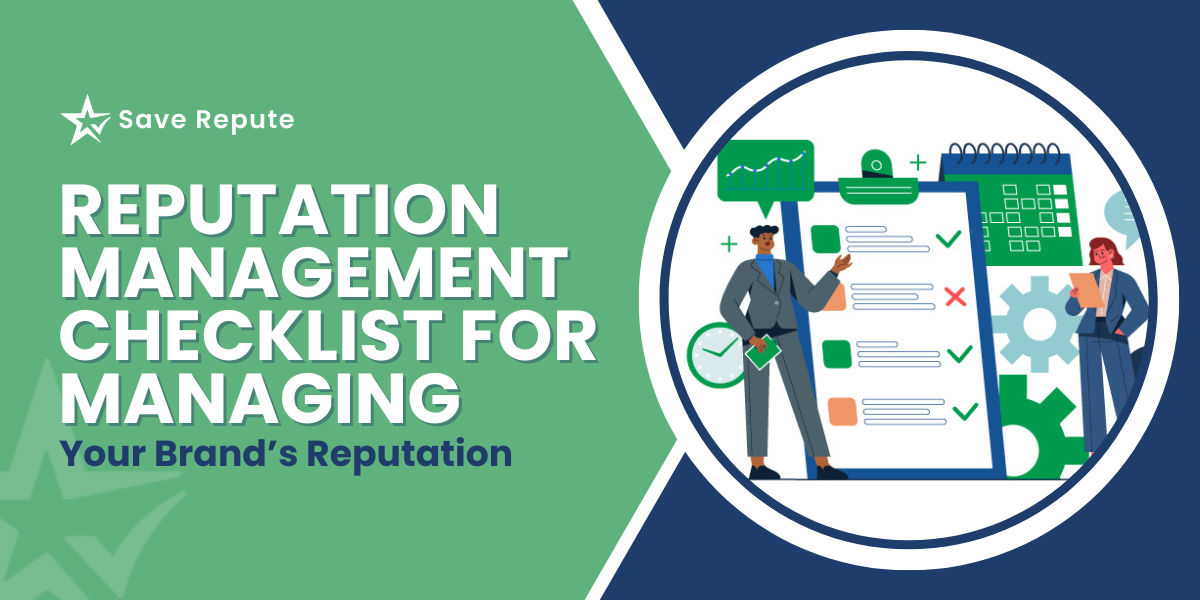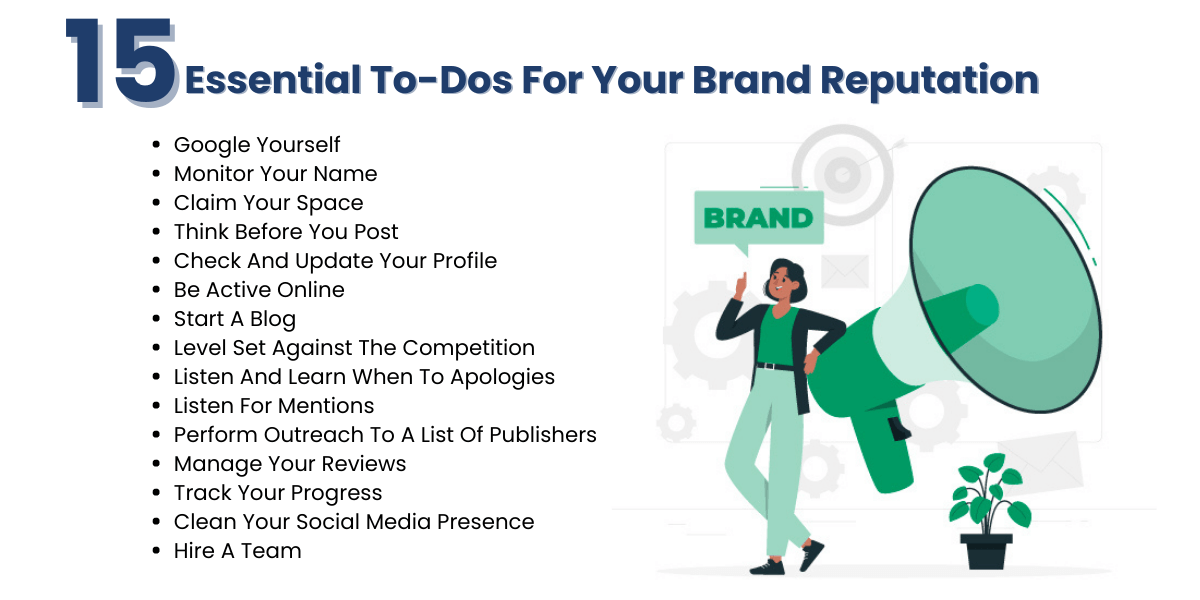Online reputation management holds significant importance in today’s digital landscape. Everyone is in the race to maintain their reviews online to get the best reputation in the market. But before managing your online visibility, there are certain things or checklists you should ensure that you must have it. With this reputation checklist, you can develop a sustainable reputation online.
In this blog post, we’ll look at the best actions you can take to manage your online reputation. This reputation management checklist helps you maintain a positive image of your brand online. So, read the blog post!
15 Essential To-Dos For Your Brand Reputation
Below are the important checklist points that will enhance your brand reputation’ reach and visibility.
1)Google Yourself
Search your name on local search engines such as Bingo, Google, and Yahoo. It will help you know about your reputation online. You can search your brand with multiple queries like name, work address, email address, phone number, and city. You can also search for any variation of your brand name and then bookmark each page to get more information at the end. This helps you know what other people will see about your brand when they search for you.
If you don’t find any negative reviews, count yourself lucky because you have a clean slate on the internet. If you have a Negative Reviews of Yourself or your Company, you can try Google Suppression Services to take down the Negative Results.
2)Monitor Your Name
Now that you know what’s about your brand online, it’s time to monitor your name without delaying it. Set up a Google alert account so that you get a notification whenever someone posts about you. You can do this even if you have a positive reputation and you can also take Reputation Monitoring Services.
3)Claim Your Space
Securing ownership of your social media accounts, professional networking profiles, and domain names under your name provides ultimate authority, safeguards against the spread of false information, and enables search engines to present accurate and pertinent results when individuals seek information about you.
4)Think Before You Post
You have the power to share your opinions on social media accounts, professional accounts, and your claimed websites. So it is advisable to use Content Marketing Wisely. You can share blog posts, social media content, and other information related to your website. But before posting anything, you should make a list of what you should post online and what you shouldn’t. It will help you maintain a lasting impression of your brand online.
5)Check And Update Your Profile
If you notice that your current social media profiles or website aren’t fulfilling your goal, you can update it. As you know, Google heavily relies on keywords, and people also search keywords on social media sites. So, add keywords in your bios and relevant hashtags so that your websites or profiles appear in search results. Make sure to keep your profile names relevant to your website and add a link to it. This can be a great way to manage your social media profiles.
6)Be Active Online
Your active social media presence will benefit your brand growth and success. When you stay active, you get to know about a lot of factors. Such as what people say about your brand, what they post about yours, their reviews, your audience demands, and other technical issues. It helps you engage with your target audience, leaving a good impression on them.
You may be interested in reading: Reputation Management Proposal
7)Start A Blog
When you start blogging on your website, it’s considered that you’re active. It’s the most appropriate way to get engaged with your audience. You can also share your website blog posts on your social media platforms and add URLs of each blog under the caption section with images. Your audience will learn about your website and share their reviews in the comment section. It will help to increase reach, traffic, clicks, etc.
8)Level Set Against The Competition
Once you have gained a clear understanding of your online presence, evaluating and comparing yourself to your top three competitors in the digital realm is essential. Immerse yourself in their articles, delve into their reviews, and gain insights into how they are depicted in the online realm.
9)Listen And Learn When To Apologies
Internet criticism should be taken seriously. Have you made a mistake or hurt someone? If so, could you apologize? Watch for common themes in the conversations. Sometimes it’s best to stay out of reputation issues, but there’s usually a way to learn from them and avoid similar issues in the future. If you’re unsure whether to apologize or contact an offender, a professional can help you decide.
10)Listen For Mentions
You can effectively track conversations around you by actively monitoring mentions. This lets you quickly resolve issues and improve your reputation. Managing and clearing your online presence involves handling negative feedback and misinformation, engaging with positive comments, and presenting your desired image. Monitoring your mentions allows you to manage your reputation and digital image.
You may also Want to read: Local Reputation Management: Al you Need to Know
11)Perform Outreach To A List Of Publishers
When analyzing your competitors, take note of the instances where they have received favorable mentions and coverage. Create a comprehensive compilation. Next, employ an outreach initiative to secure a mention in that particular platform as well.
12)Manage Your Reviews
Make a list of both positive and negative reviews. Then respond to negative and positive reviews in a humble manner. Your bad behavior will tarnish your reputation in seconds. There’s no need to respond to each review, you can select any, but at the start, you must review all. You can even use a review template to manage your reviews.
13)Track Your Progress
On social media platforms, you can track your progress through analytics tools. It will show you overall performance; you can even apply a filter to check your month-by-month process. This way, you can understand where you need improvement and where you can make further progress. You can also use Google search console to track your website progress.
14)Clean Your Social Media Presence
If the audit shows a weak online presence, social media is the perfect way to attract new customers. Minimal SEO can boost brand or business visibility. Use keywords and exact names in text blocks. Twitter and others limit post and description, word count. Facebook, LinkedIn, and others allow wordiness. Use this to express and elaborate! If you’re a person, write a social media bio that voices your vision.
15)Hire A Team
If you have an understanding of SEO and you think that you can do it individually, then it’s good. But you can hire professional experts if you are stuck and still want to maintain your brand image. You can hire SaveRepute’s team expert to manage and monitor your brand image online.
Wrapping It Up
Now you understand how much it’s important to maintain your reputation management checklist. When you look for the above checklist, ask yourself do you have all these 15 checklist points in your brand’s checklist? – Make your checklist and compare it to this expert checklist, then apply the missing points. This will boost your brand success and growth online.



